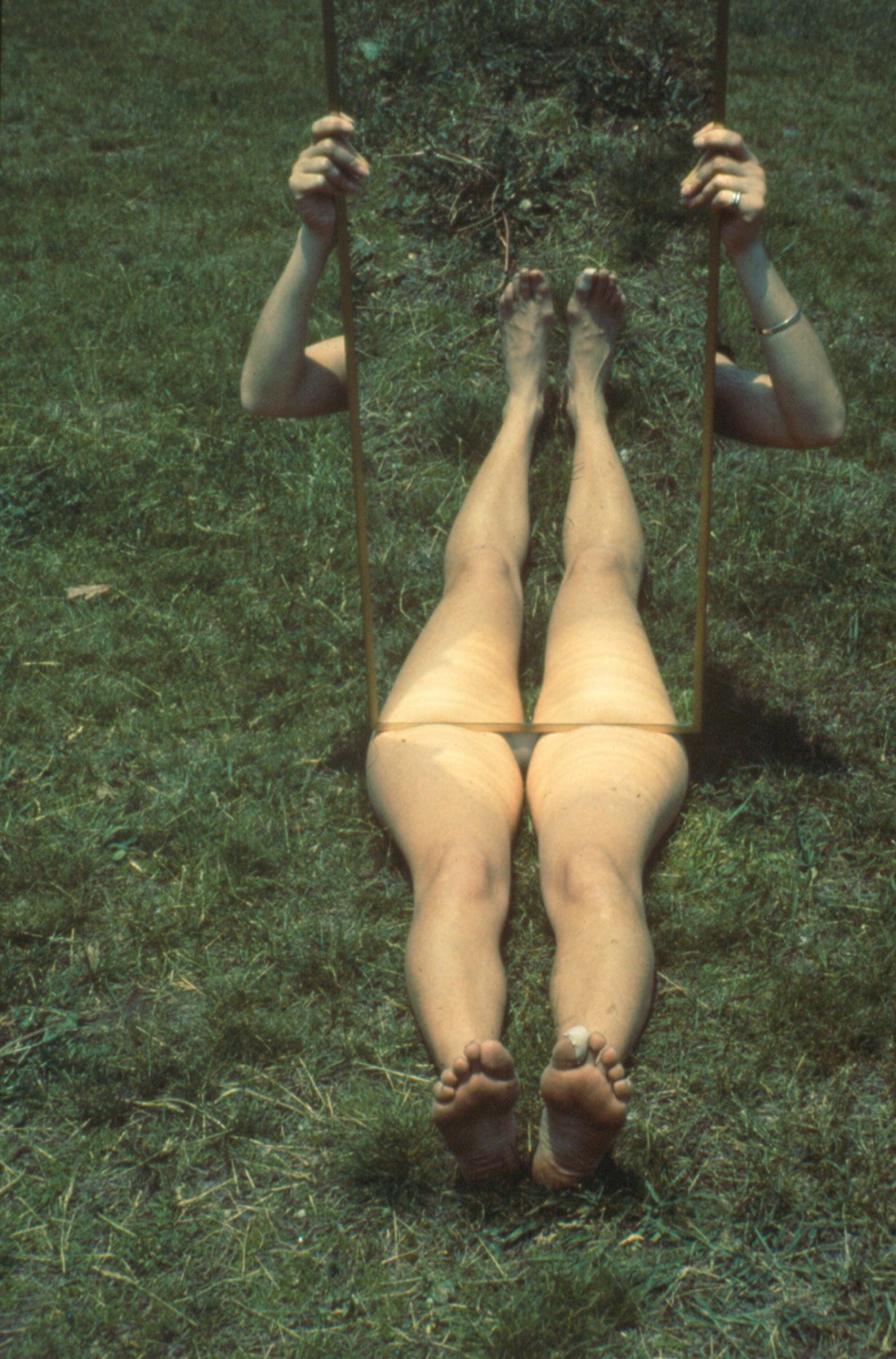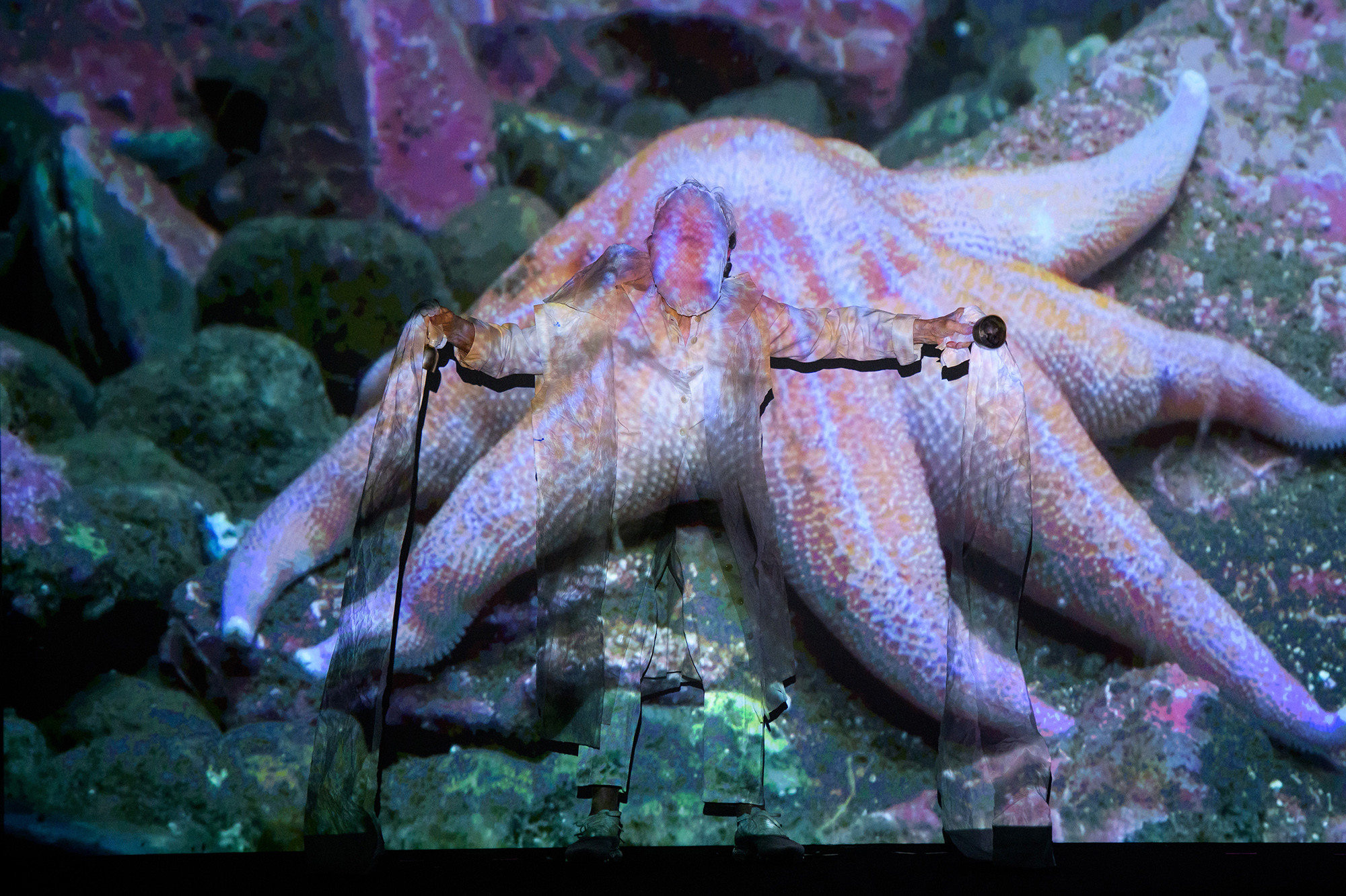Jonas didn’t expand cinema so much as explode it, a new survey of the transmedia artist at MoMA shows
Good Night Good Morning beautifully charts five decades of Joan Jonas’s transmedia explorations of the contingency of perception, the mutable nature of narrative and the nonhuman actors with which we are enmeshed. The survey moves roughly chronologically from documentation of early outdoor performances to recent constellations of video, drawings, sculpture and sound that don’t expand cinema so much as explode it (perhaps a natural outgrowth of Jonas’s display strategy, introduced in 1994 and prominent here, of translating performances into installations featuring videos, sets and props). Yet, linear time doesn’t quite square with Jonas’s ethos, as suggested by the placement, at the show’s outset, of her 2006 video sculpture My New Theater VI: Good Night Good Morning ’06, which builds on her 1976 video Good Night Good Morning. Frequently modified, expanded and reprised, Jonas’s completion-resistant works even moonlight as part of other works: Good Night Good Morning was incorporated into Mirage (1976/94/2005), an installation pairing assorted footage – erupting volcanos, ‘endless drawings’ – with aluminium cones, a mask and blackboard sketches.
Mirrors pervade the show, most overtly in the early works on view. There’s the mirrored kaftan that Jonas wore in Oad Lau (1968), a performance – depicted in a photograph – involving spoken sections from Jorge Luis Borges’s Labyrinths (1962), a story collection casting mirrors as passageways to alternate realities. A similar garment appears in the silent film projection Wind (1968), in which figures move against – dance with – a tempest, so the elements become fellow performers. Reflections shatter the coherence of landscapes and bodies in Mirror Piece I (1969) and Mirror Piece II (1970). Represented by photographs, notebooks and a videotaped 2019 re-performance on a monitor, these choreographies feature simple Judson Dance Theater-like movements executed by performers carrying full-length mirrors that produce shifting crops of their own bodies, the environment and the audience.
When Rosalind Krauss argued in 1976 that the medium of video was narcissism, one of the culprits being the ‘mirror-reflection of synchronous feedback’, she noted that Jonas’s Vertical Roll (1972) undermined ‘the video mechanism in order to break out of its psychological hold’. Made two years after Jonas acquired a Sony Portapak, the single-channel video shows the artist performing as her erotic masked alter ego Organic Honey. Her body is fragmented and obscured by the rolling bars of desynchronised signals, impeding its easy consumption by viewers. In the projected performance video Organic Honey’s Visual Telepathy (1972), the character rhythmically thwacks a mirror with a spoon and traces objects on paper (Jonas’s hallmark drawing-as-performance), among other actions. Within the video, the self-surveilling seductress performs in dialogue with her own image through multiple live feeds, raising questions about made-for-the-screen performances of femininity and cultural feedback loops.

Jonas’s interest in female archetypes, and the ways in which images change as they are repeated (or reflected), carried over into subsequent works inspired by fairytales, myths and folklore: narrative forms historically involving unstable oral transmission, collective authorship and shapeshifting retellings. Starring Tilda Swinton and Ron Vawter, the 28-minute video Volcano Saga (1989) takes on the Laxdæla saga, a medieval Icelandic folktale, believed to have been authored by a woman, involving dream interpretation and romantic turmoil. The video, which overlays the actors and the environment onto one another, is shown alongside a watercolour storyboard and photographs of the performance out of which it grew, exemplifying the exhibition’s emphasis on contextualising material.
Also inspired by an Icelandic tale, Reanimation (2010/12/13) responds to Halldór Laxness’s Under the Glacier (1968), a novel about a glacier where some women have special powers. Featuring a soundtrack by jazz musician Jason Moran and Sami joik singer Ánde Somby, the dizzying installation revolves around four large Japanese shoji screens onto which is projected footage of Norwegian glaciers and tunnels, and the artist fluidly ‘drawing’ on the snow. At the centre, a sculpture of dangling crystals catches and refracts the light, casting shadows on the screens. As the world’s glaciers calve and melt, the magic won’t last, at least for us; climate grief punctures the sense that time is suspended, amberous.
Ecological stewardship is taken up more explicitly in an appropriately vast multimedia installation devoted to the ocean, its inhabitants and its mythologies. Moving Off the Land II (2019) intersperses drawings, mirrors, an aquarium and videos housed in variously scaled versions of the wooden ‘theater boxes’ she began working with during the late 1990s. In several videos Jonas – accompanied by children (stand-ins for the future, and a child’s point of view) – performs and draws amid sweeping projections of sea creatures. The inclusion of marine biologist David Gruber’s underwater footage of bioluminescence, made using special lenses that mimic a fish’s eye, underscores Jonas’s interest in other ways of seeing. The ultimately unanswerable question of how a fish sees, paired with the piece’s unassimilable scalar, spatial and temporal confusions, calls to mind Elizabeth DeLoughrey and Tatiana Flores’s writings, drawing on Donna Haraway, on ‘diffracted’ representations of the aquatic that acknowledge entanglement, alterity and materiality. ‘Unlike reflections, diffractions do not displace the same elsewhere, in more or less distorted form,’ wrote Haraway. ‘Rather, diffraction can be a metaphor for another kind of critical consciousness.’
Good Night Good Morning at Museum of Modern Art, New York, through 6 July
